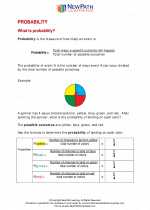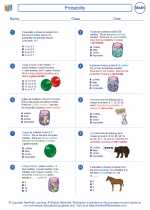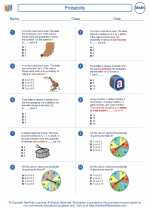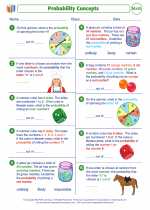Triangular Prism
A triangular prism is a three-dimensional shape with two triangular bases and three rectangular faces. The two triangular bases are connected by three rectangular faces, making it a type of prism.
Properties of a Triangular Prism:
- It has 6 faces: 2 triangular bases and 3 rectangular faces.
- It has 9 edges: 3 on each triangular base and 3 connecting the bases.
- It has 5 vertices: 6 vertices on each triangular base and 3 connecting the bases.
- The two triangular bases are parallel to each other.
Formulas for a Triangular Prism:
To find the surface area and volume of a triangular prism, you can use the following formulas:
Surface Area = 2 * (Area of base) + (Perimeter of base) * (Height of prism)
Volume = (Area of base) * (Height of prism)
Example Problem:
Calculate the surface area and volume of a triangular prism with the following dimensions:
- Base: equilateral triangle with side length 5 cm
- Height of prism: 8 cm
Solution:
First, calculate the area of the base:
Area of equilateral triangle = (sqrt(3) / 4) * side length2 = (sqrt(3) / 4) * 52 = (sqrt(3) / 4) * 25 = 25sqrt(3) / 4 square cm
Now, calculate the perimeter of the base:
Perimeter of equilateral triangle = 3 * side length = 3 * 5 = 15 cm
Surface Area = 2 * (25sqrt(3) / 4) + 15 * 8 = 25sqrt(3) + 120 square cm
Volume = (25sqrt(3) / 4) * 8 = 50sqrt(3) cubic cm
Study Guide:
To master the concept of a triangular prism, it's important to understand the following key points:
- Identifying the faces, edges, and vertices of a triangular prism.
- Understanding the formulas for calculating the surface area and volume of a triangular prism.
- Practicing solving problems involving the surface area and volume of triangular prisms with different dimensions.
Additionally, it's helpful to visualize and draw different triangular prisms to gain a better understanding of their properties and how the formulas apply to real examples.
With a solid grasp of these concepts, you'll be well-prepared to tackle problems related to triangular prisms!
.◂Math Worksheets and Study Guides Fifth Grade. Probability

 Worksheet/Answer key
Worksheet/Answer key
 Worksheet/Answer key
Worksheet/Answer key
 Worksheet/Answer key
Worksheet/Answer key
 Worksheet/Answer key
Worksheet/Answer key
